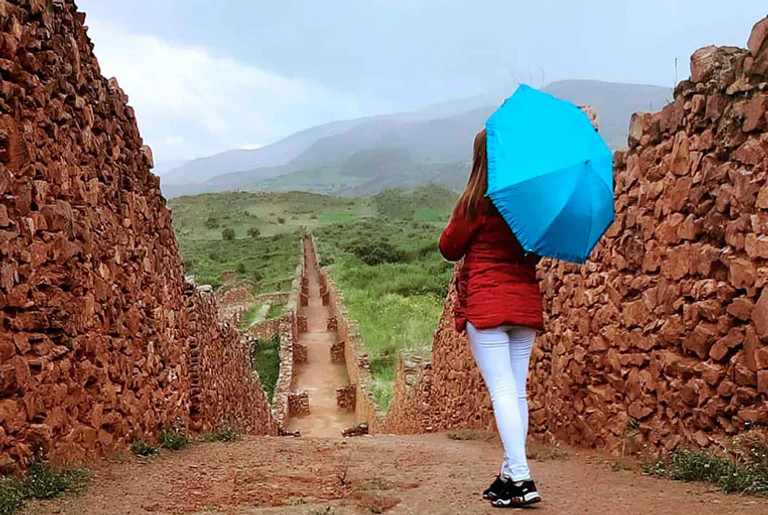
May 28, 2025
Attractions of Circuit 2 with the Cusco Tourist Ticket
If you think you’ve seen everything in Cusco, wait until you discover what’s included in the Cusco Circuit 2 Tourist Ticket. This ticket gives you access to several sites that combine history, art, and archaeology, all in one tour. It’s not just another ticket; here are options that might surprise you and make your visit much more complete.
Regional Historical Museum
The Regional Historical Museum is located in the House of Inca Garcilaso de la Vega, a 16th-century colonial building on Heladeros Street. This museum houses an exhibition spanning pre-Hispanic times through the Republican period.
The first rooms display archaeological remains from the cultures that inhabited Cusco before the Inca rule. These include ceramics, tools, and bone remains. Pre-Inca cultures represented include, for example, Chanapata, Qotakalli, and Killke.
Colonial artifacts, paintings from the Cusco School, and historical documents related to the conquest are also on display. The house itself is of historical value, as it was the birthplace and home of the mestizo chronicler Inca Garcilaso de la Vega.
The museum offers a chronological overview of Cusco’s cultural development. It provides an understanding of the social, economic, and cultural transformations the region has undergone over time.
Admission hours to the Regional Historical Museum: 8:00 a.m. to 5:00 p.m.
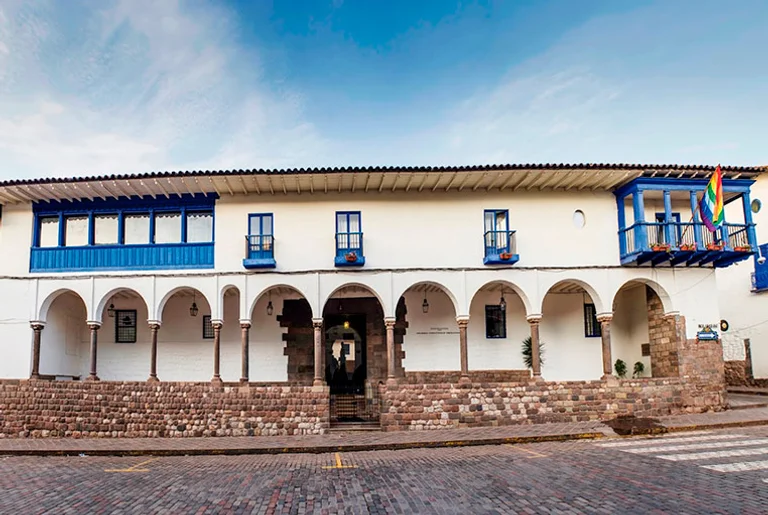
Museum of Contemporary Art
The Museum of Contemporary Art is located inside the Municipal Palace of Cusco, in Plaza Regocijo. It is a space dedicated to promoting modern and contemporary art by artists from Cusco and other regions of Peru.
The museum has several temporary exhibition halls and a permanent collection. Among the works on display are paintings, prints, sculptures, and photographs that reflect social, political, and cultural themes from a contemporary perspective.
Many of the works on display are by emerging artists who use different techniques and styles. The exhibitions are frequently updated to present new artistic proposals and promote the development of art in the region.
This museum is part of Circuit 2 of the Cusco Tourist Ticket. Its visit complements the tour of historical museums, offering a current overview of artistic production in Cusco and Peru.
Opening hours to the Museum of Contemporary Art: 9:00 a.m. to 6:00 p.m.
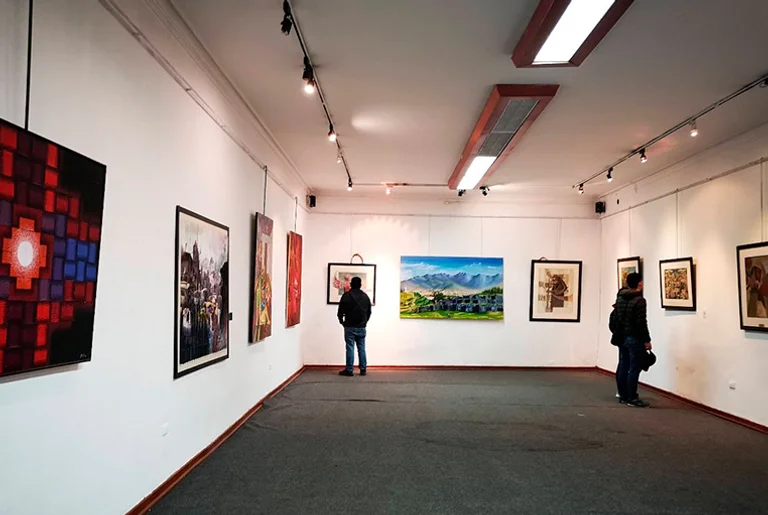
Note:
Traveler, keep in mind that this circuit includes many places to visit, including museums and archaeological sites, so time is of the essence. One of the best ways to get to know a good part of them is by taking the “South Valley tour”, which is offered by most travel agencies. The places you don’t get to visit, such as some museums, you can tour them on your own. The latter are located in the city of Cusco and you can easily reach each of them on foot.
Monument to Pachacuteq
The Inca Pachacútec Monument is located at the intersection of Avenida Sol and Avenida Pachacútec. It is a multi-level stone tower topped by a bronze sculpture of the Inca Pachacútec, one of the most important emperors of the Tahuantinsuyu.
Inside the tower, there is a small exhibition explaining the life and legacy of Pachacútec, as well as the territorial expansion and organization of the Inca empire under his rule. Plans and models of Inca architecture can also be seen.
The monument has several levels accessed by internal stairs. From the top, there is a panoramic view of the city of Cusco. Although it is not a museum in the strict sense, the site offers relevant information about Inca history.
Admission to the monument is included in Circuit 2 of the Cusco Tourist Ticket. Its location makes it easy to integrate into a tour of the city’s sites without having to leave the city center.
Entrance hours to the Pachacuteq Monument: 8:00 a.m. to 3:00 p.m.
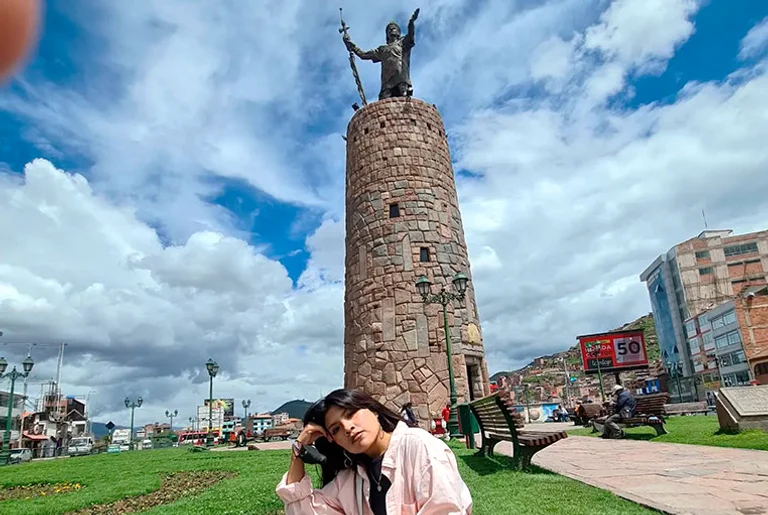
Museum of Popular Art
The Cusco Museum of Popular Art is located near the Plaza de Armas, in the basement of the main headquarters of the Cusco Decentralized Directorate of Culture. This museum houses a collection of artworks created by 20th-century Cusco artisans, especially those associated with the Cusco School of Popular Art.
The museum stands out for its display of ceramics, religious imagery, festive masks, altarpieces, and other forms of traditional art. The works are largely from renowned artisans who have received national and international awards for their work.
A significant section of the museum is dedicated to “Andean altarpieces,” small decorated boxes depicting religious scenes, customs, or popular figures. Also included are sculptures of saints, virgins, and figures from Cusco’s festive traditions.
Opening hours to the Museum of Popular Art: 9:00 a.m. to 6:00 p.m.
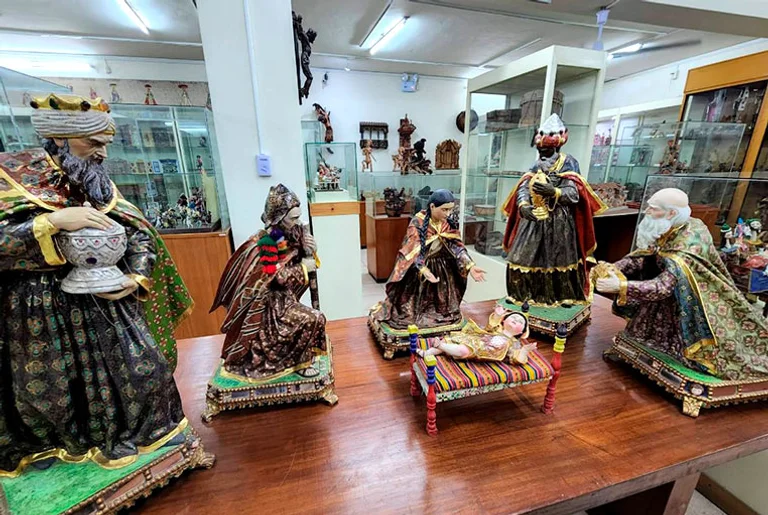
Qosqo Center for Native Art
The Qosqo Native Art Center was founded in 1924 and is dedicated to the preservation and dissemination of folk dances and music from the different regions of Peru. It is located on Avenida El Sol, one of the main arteries in the city of Cusco.
The center offers daily performances of traditional Andean dances. During the shows, the dancers wear traditional costumes from different provinces and communities throughout the country, performing choreographies that are part of Peru’s intangible heritage.
The dances are accompanied by live music performed on Andean instruments such as the quena, charango, zampoña, and bombo. Each performance is preceded by a brief explanation in Spanish and English about the origin and meaning of the dance.
Admission to the Qosqo Native Art Center is included in Tour 2 of the Tourist Ticket. Performances take place in a closed auditorium and typically last about an hour. This is an opportunity to experience Peru’s cultural diversity through its artistic expressions.
Admission hours to the Qosqo Native Art Center: 6:30 p.m. to 8:15 p.m.
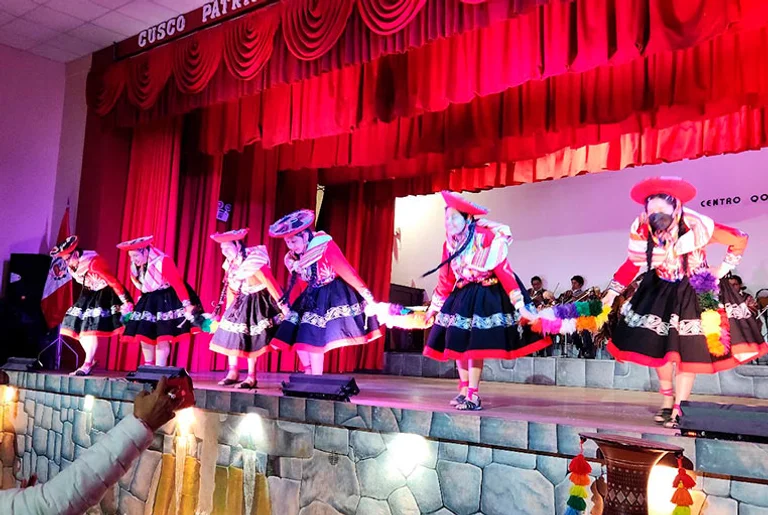
Tipon Archaeological Park
Tipón is an archaeological complex located about 25 kilometers southeast of Cusco, in the Oropesa district. It is known for its Inca hydraulic system, considered one of the most advanced in the Andean world. The site was likely a ceremonial and agricultural site.
The complex features extensive agricultural terraces, water channels, and fountains that continue to function today. The structures are made of finely carved stones, indicating that Tipón was an important site, possibly for the elite.
A central feature of Tipón is the ritual use of water. There are stepped fountains where the water flows in a controlled manner, suggesting a ceremonial function related to the Andean worldview and the worship of water as a vital element.
Tipon entry hours: 8:30 a.m. to 4:30 p.m.
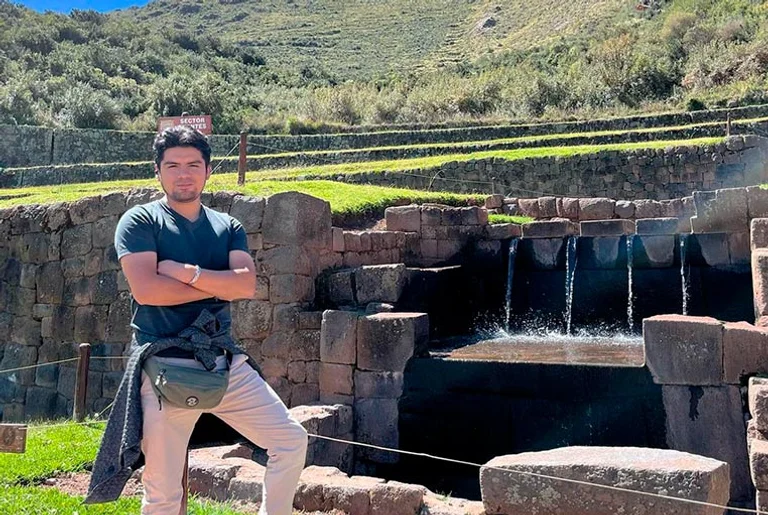
Note:
For you, traveler who plans to know as much as possible of Cusco, there is the Cusco Integral Ticket, which includes all the tourist attractions of circuits 1, 2 and 3. In addition, it is valid for 10 days and has a very affordable price, which makes it ideal for those who have travel packages of more than two days.
Pikillacta Archaeological Park
Pikillaqta is a pre-Incan archaeological complex located 30 kilometers from Cusco, in the South Valley. It was built by the Wari culture, a civilization that predated the Inca Empire and greatly influenced the Andean region between the 6th and 9th centuries AD.
The site is made up of straight streets, rectangular enclosures, warehouses, and walls made of rough stone held together with mud. Its urban planning is one of the prime examples of pre-Inca architectural design in Peru.
Pikillaqta was likely an administrative and ceremonial city. Areas designated for storage, residential areas, and public spaces have been identified. Its size and design suggest a central role in the Wari road network, connecting regions of the highlands with the forest.
Pikillacta entry hours: 8:30 a.m. to 4:30 p.m.
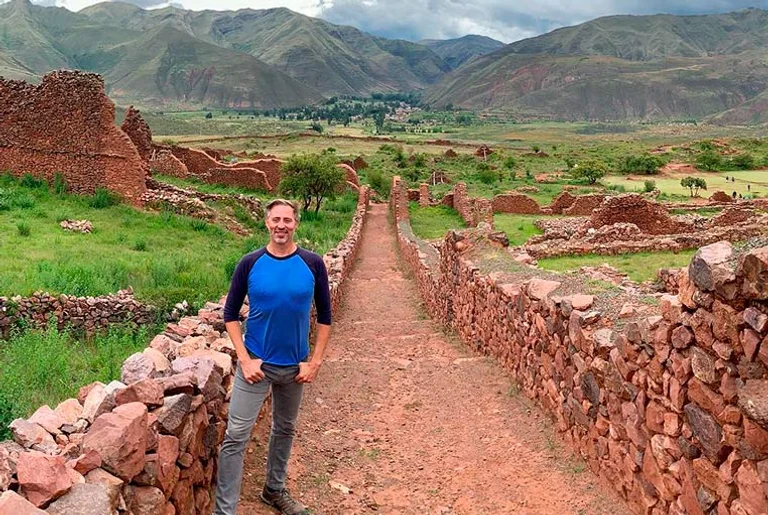
Characteristics of the tourist attractions of circuit 2
|
Attractive
|
Main function
|
Highlighted Features
|
Check-in time
|
|---|---|---|---|
| Regional Historical Museum | Exhibition of Cusco folk art | Andean altarpieces, religious imagery, festive masks, works by 20th-century Cusco artisans | 08:00 – 17:00 |
| Museum of Contemporary Art | Disseminate modern and contemporary art | Works by Cusco artists, temporary exhibitions, various techniques such as painting, sculpture and photography | 09:00 – 18:00 |
| Monument to Pachacuteq | Commemorative space for Pachacútec’s legacy | Observation tower with Inca sculpture, exhibition on its history and architecture, panoramic view of Cusco | 08:00 – 17:00 |
| Museum of Popular Art | Ritual center linked to water and rest of the Inca | Water fountains, aqueducts, niches, agricultural terraces, relaxing natural surroundings | 09:00 – 18:00 |
| Qosqo Center for Native Art | Preservation and dissemination of folk dances | Live dances with traditional costumes, Andean music, repertoire from various regions of Peru | 18:30 a 20:15 |
| Tipon Archaeological Park | Inca agricultural and ceremonial center | Functional hydraulic complex, agricultural terraces, ritual fountains, advanced hydraulic engineering | 08:30 a 16:30 |
| Pikillacta Archaeological Park | Pre-Inca administrative and ceremonial city of the Wari culture | Planned urban design, straight streets, rectangular enclosures, unhewn stone architecture | 08:30 a 16:30 |
Frequently Asked Questions
1. How long does it take to visit the main attractions of Circuit 2?
To see all these places, it’s recommended to do so in two days, as some are far from Cusco, while the other attractions are within the city. You could opt for a tour for more convenience.
2. What is the best time of year to visit these places?
Traveler, any time of year is suitable. This place isn’t affected by rain, so you can explore it without any complications. The only thing you should keep in mind is to bring the appropriate clothing for the occasion.
3. What type of clothing and footwear is recommended for walking in these places?
If you’re visiting archaeological sites, it’s important to wear clothing that allows you to move comfortably without restricting your stride. Footwear is also important; you could opt for hiking shoes. However, if you’re visiting museums, you have more freedom of clothing and can wear whatever you like best.
4. Can you take photos freely inside museums and archaeological sites?
Within archaeological sites, you are free to take photographs wherever you wish. However, in museums, you should be more cautious, as some sections are prohibited, while others are permitted.
5. Are tour guide services available at these attractions?
Something you should keep in mind is that you won’t find tour guides available at any of these attractions, so if you want this service, you’ll need to book it in advance. If you go with a travel agency, rest assured that this service will be included.
6. What facilities are there for eating or buying snacks near these places?
Whether you go on your own or with a travel agency, you’ll constantly pass by places that sell snacks, pork, and, most importantly, the famous chuta bread. If you go on your own, you can stop at these places at your leisure. If you go with a travel agency, they’ll probably make a stop, although the return journey is usually more direct.
7. How long is the average hike in Tipón and Pikillaqta?
If you go with a travel agency, each archaeological site typically lasts between 30 and 50 minutes. This is more than enough time to explore the entire site and take photos without missing a thing.
8. Can these places be visited in a single day or is it better to spread the visit over several days?
It’s possible, but it would be very tiring. That’s why this ticket is valid for two days, allowing you to explore all these places more leisurely. You could choose to visit the more remote and difficult-to-access sites with the South Valley tour, or the next day you could choose to explore the closer sites, which are within the city of Cusco, on your own.
9. How accessible are these sites for people with reduced mobility?
In the case of archaeological parks, access is only possible to a limited extent, from where panoramic views are available. Regarding museums, some ground-floor spaces are open to visitors, but because the buildings cannot be modified, it is not possible to install elevators or ramps in many of them.
10. Is there public transportation or tours that include Circuit 2?
The best option for visiting most of these places is to book a travel agency that offers tours to the South Valley. Even so, there will still be places to visit, mainly museums located in the city of Cusco. You could take another day to explore them, as they’re not far away and most of them can be reached on foot.